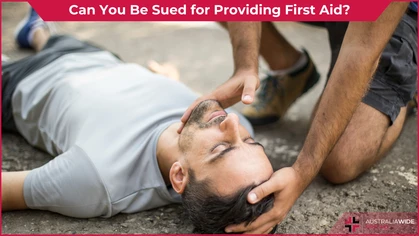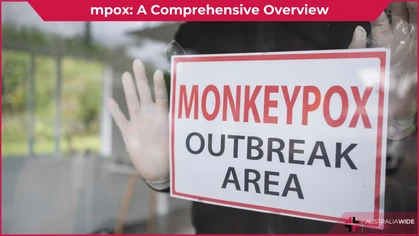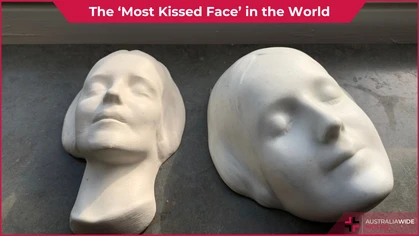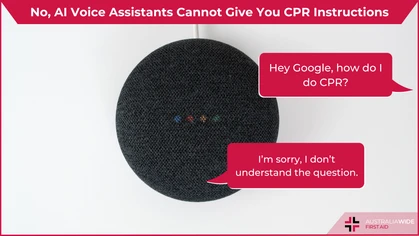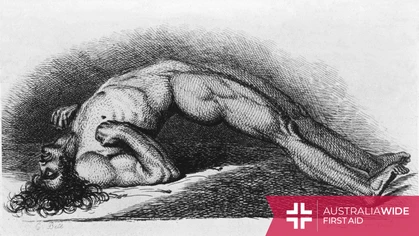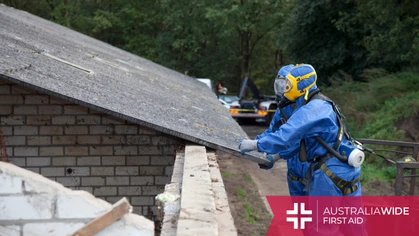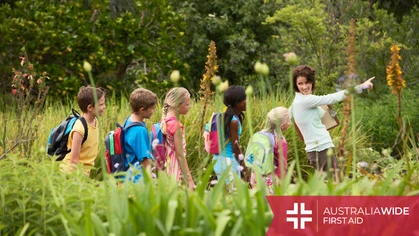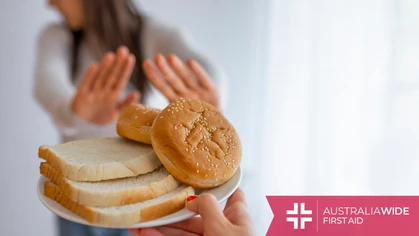Back Blows Save Baby's Life

First aid in the news
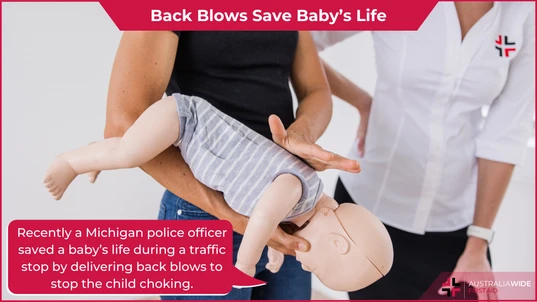 Recently we saw news of a Michigan police officer saving a baby’s life during a traffic stop.
In the dramatic and disturbing footage, the officer delivered back blows to stop the child choking. Had he not acted quickly, the outcome could have been a tragedy.
Recently we saw news of a Michigan police officer saving a baby’s life during a traffic stop.
In the dramatic and disturbing footage, the officer delivered back blows to stop the child choking. Had he not acted quickly, the outcome could have been a tragedy.
First Aid Knowledge Saves Baby’s Life
Body cam footage shows US officer Brendan Fraser and his partner pulling over a speeding car. Getting out of the police car, he heard the desperate cries from the baby’s mother, sitting in the passenger seat. “Help, help, we got a baby here dying,” the driver, who is the baby’s uncle, shouted through tears. The officers immediately sprung into action. Pulling the baby from the car, they noticed that he was turning blue, and his eyes were rolling back into his head. Officer Fraser began administering back blows, desperately attempting to clear the boy’s airways. Shortly after, a liquid was spat up. Colour returned around the boy’s lips, and he began breathing. “Officer Fraser’s actions on this traffic stop are nothing short of heroic,” Warren Police Commissioner William Dwyer said in a statement.How to Perform Back Blows on an Infant
Knowing how to perform back blows on an infant can save their life if they are choking, turning blue, and/or not breathing. An airway obstruction occurs when something is blocking the airways, stopping the effective flow of air in and out of the lungs. The blockage could be caused by food, thick fluid, regurgitation from the lungs or stomach, or the tongue falling back into the throat. This last is extremely uncommon and most often happens during a seizure. To relieve an airway obstruction, first look inside the mouth to see if you can identify the object. Never put your fingers into their mouth in an attempt to remove the object, as you may push it further down. Have someone call Triple 0 immediately, asking for an ambulance, while you begin performing back blows and chest thrusts. Turn the child onto their stomach along your arm or across your lap. Angle them approximately 45 degrees so that their head is lower than their body. Deliver 5 firm blows with the heel of your palm to their back, between their shoulder blades. Turn the child over slightly to check if the airway is now clear. If it is not, lay the child on their back along your thigh. Perform 5 chest thrusts, as you would for CPR. For an infant use 2 fingers on their sternum, and for a child use one or two hands depending on their size. Sharply compress their sternum about a third of the depth of their chest cavity, then allow their chest to fully recoil before performing the next chest thrust. Repeat this cycle of back blows and chest thrusts until the objects is dislodged or trained medical professionals arrive.Keep Your First Aid Knowledge Up to Date!
This terrifying ordeal could have ended in tragedy. Not only for the baby who was choking, but also for the adults who were speeding through traffic in an attempt to get to the hospital for help. It highlights the importance of keeping your first aid knowledge up to date. It could be your turn to save a life very soon! With over 75 locations nationwide, find your nearest training centre and update your skills!Additional Resources
Download our: CPR Chart - Infants CPR Chart - Children And if you need more convincing of the importance of keeping your skills up to date, read: Why Parents Should Learn CPR Read our CPR Guides: How to Perform CPR - Infants How to Perform CPR - Children
Originally published at
https://www.australiawidefirstaid.com.au/resources/back-blows-save-babys-life
as part of the Australia Wide First Aid Articles Library

